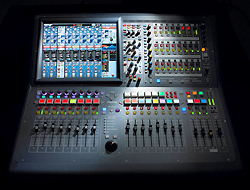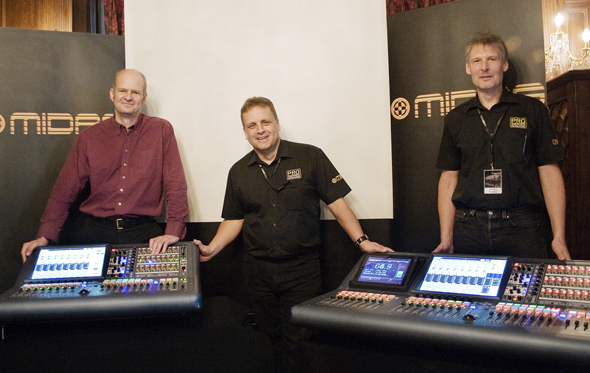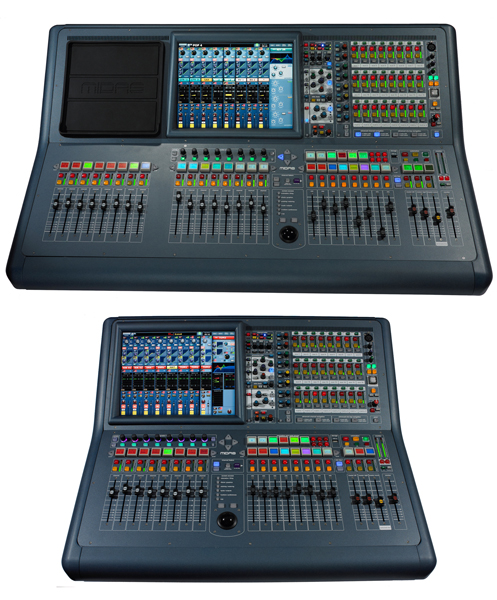
Fine food, drinks, a bonding experience involving crossbows, rifles, and 12-gauge over/under shotguns (accompanied by traditional Pimm’s cocktails) – and the unveiling of two new digital consoles.
That was the scene at the Midas pre- PLASA launch of its new PRO2 and PRO2C digital consoles at the New Hall Hotel & Spa in Sutton Coldfield, Birmingham in August. Secluded just off the beaten path in England’s West Midlands, New Hall features its own moat, extensive gardens, and other trappings that were all quite interesting, but let’s shift the focus to the new audio desks where it belongs.
Representing the latest additions to the PRO Series, the new PRO2 and PRO2C combine the audio quality and performance of the XL8 in a much more compact package with competitive pricing.
First a word about the distinction between the PRO2 and PRO2C. There is little, really, except the PRO2C has eight fewer input faders and a smaller frame measuring 34.7 inches (w) by 28.7 inches (d). (The PRO2 measures 46.4 by 28.7.)
The smallest and least expensive digital consoles found within the Midas catalog, both are outfitted with the same high-quality circuitry found throughout the PRO Series, including Alex Cooper-designed mic preamps, A/D converters, and screens built for comfortable daylight viewing.
Sampling rates, algorithms, and the converters found onboard these newcomers will also be familiar to fans of the PRO Series.

Many Modes
Given the closeness in similarity of the architecture shared by the two, however, I’ll dedicate the rest of this article to discussing the larger PRO2 until the end, at which time I’ll give details into the specific components offered with each, as well as their respective prices as revealed during the product launch.
The PRO2’s template allows it to be operated using one of three modes of channel navigation.
On a base level, it can be used in “normal” modes for either front of house or monitor applications.
Selecting either of these channel navigation characteristics offers a working surface familiar to any digital console user.
Conversely, switch into advanced navigation mode, and a number of progressive features can be accessed in a selectable fashion that lets users adapt to what’s implemented at their own pace.
In advanced mode, you can activate fader flip, extend input faders into the VCA section, and hide unassigned channels.

